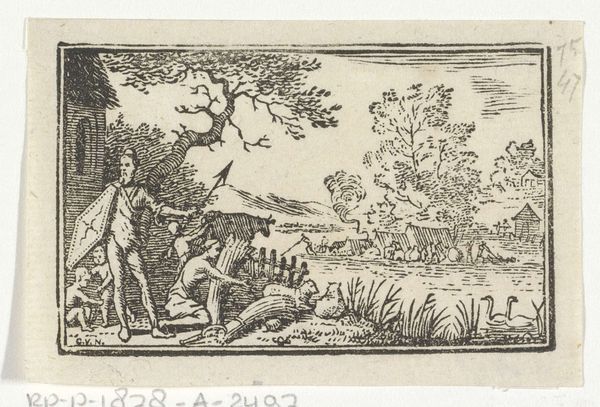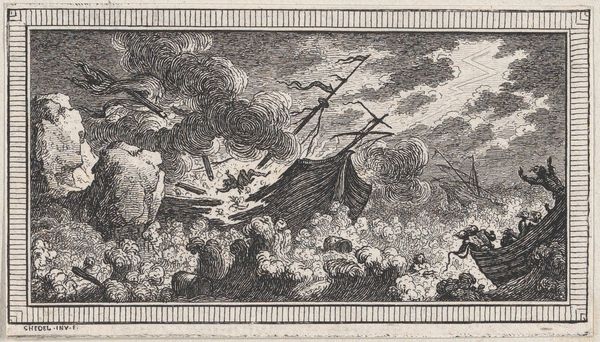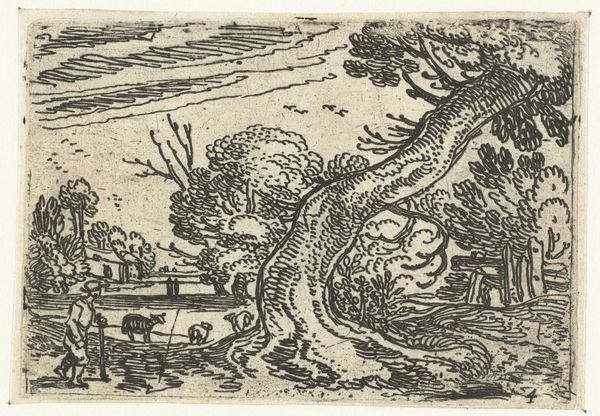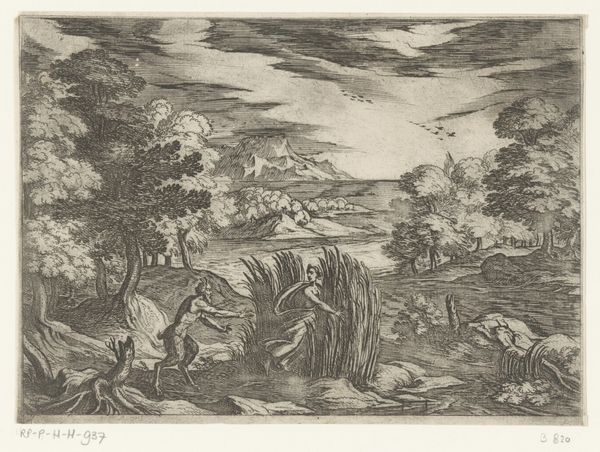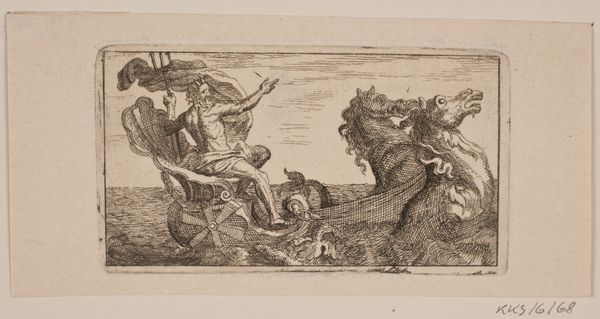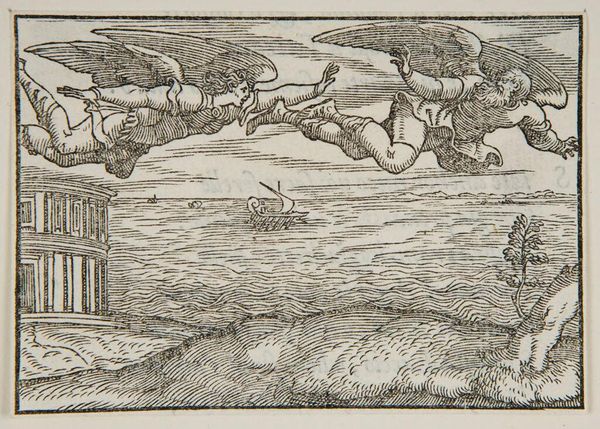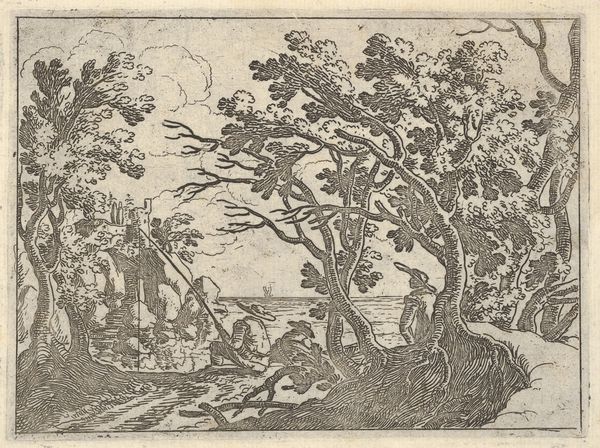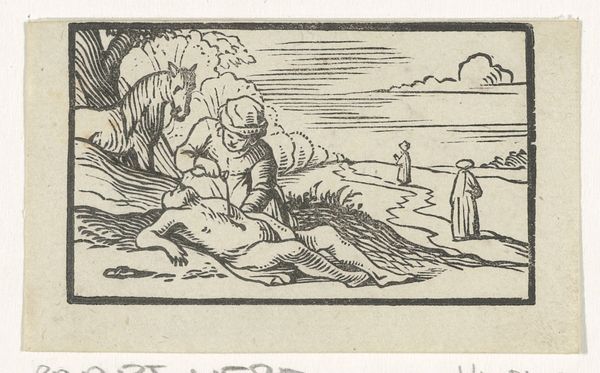![[title not known] by John Linnell](/_next/image?url=https%3A%2F%2Fd2w8kbdekdi1gv.cloudfront.net%2FeyJidWNrZXQiOiAiYXJ0ZXJhLWltYWdlcy1idWNrZXQiLCAia2V5IjogImFydHdvcmtzLzRhNTk4ZGQwLTZjMmItNGQ4MC1iZDQ3LWUxOTFlNmZlZmQ4OS80YTU5OGRkMC02YzJiLTRkODAtYmQ0Ny1lMTkxZTZmZWZkODlfZnVsbC5qcGciLCAiZWRpdHMiOiB7InJlc2l6ZSI6IHsid2lkdGgiOiAxOTIwLCAiaGVpZ2h0IjogMTkyMCwgImZpdCI6ICJpbnNpZGUifX19&w=3840&q=75)
Copyright: CC-BY-NC-ND 4.0 DEED, Photo: Tate
Curator: This wood engraving comes to us from John Linnell, who lived from 1792 to 1882. It currently resides in the Tate Collections. Editor: The first thing that strikes me is how the stark contrast lends a sense of dramatic weight and almost a primitive, raw energy to the landscape. Curator: Given Linnell's religious convictions, it's tempting to read the figures wading through the water as a symbolic purification or journey of faith. The towering trees might represent divine strength. Editor: I wonder, though, about the wood itself. What kind of woodblock was used? How did the grain influence the mark-making? The density of the marks in the foliage is particularly interesting. What tools did he use to achieve that effect? Curator: The symbolism certainly resonates with the era’s fascination with nature as a conduit to the divine. The artist invites us to consider a parallel between human experience and natural order. Editor: Yes, and it’s intriguing to consider the social conditions under which such an image would be produced and consumed. Who was the intended audience? Curator: It's a powerful reminder of the layers of meaning that can be embedded in even the simplest of images. Editor: And a testament to the enduring power of a traditional medium like wood engraving to convey so much.
